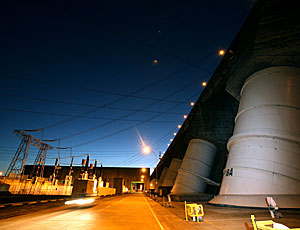The cause of a massive electrical blackout that darkened large portions of Brazil in early November is still being investigated despite initial reports from the national grid operator that lightning and strong winds affected the transmission grid in southern Brazil.

At 10:13 p.m. on Nov. 10, the lights went out in Brazil. For almost three hours a massive swath of the South American country, including 18 of its 26 states, two of its largest metropolitan areas, Sao Paulo and Rio de Janeiro, as well as the capital of Brasília, was left in total darkness. The blackout affected an estimated 60 million people, almost a third of the country’s population.
The following day, Edison Lobao, Brazil’s minister of mines and energy, attributed the cause of the outage to lightning strikes and strong winds in the vicinity of a critical transmission point at Itabera. Three transmission lines routing power from the 14,000-Mw Itaipu hydroelectric plant on the border of Brazil and Paraguay apparently short-circuited, creating a domino effect that quickly tumbled across the grid.
Lobao based his statements on information from the independent system operator (ONS), the national regulatory agency, ANEEL, and the state-owned transmission company, Furnas Centrais Elétricas. Since then, others have questioned whether the explanation is correct.
Meteorologists from Brazil’s National Institute for Space Research (INPE) subsequently reported that lightning strikes associated with the storms were neither close enough nor strong enough to damage the transmission lines. Brazilian President Luiz Inacio Lula da Silva now has ordered an investigation into the incident’s cause. He repeated a vow to uncover the “truth” of the incident in a Nov. 16 radio address. Lobao is also slated to testify before Brazil’s congress.
Itaipu is located on the Paraná River. In 2008, the plant produced 94.68 billion kWh. Almost 90% of the power was sent to Brazil through a pair of 800 kilometer-long 66-kv power lines supported by more than 3,400 towers.
Initially, some suspected there was an operational failure at Itaipu itself, but officials at the hydroelectric facility say this was not the case. “Immediately after the blackout, the Itaipu powerplant was connected to its turbines, which were spinning in a vacuum and unable to transmit energy because the transmission lines connecting Itaipu to the Brazilian grid were disconnected,” according to a statement issued by the dam operators.
The fact that Paraguay continued to receive power from the plant during the blackout bolstered this contention, they...


Post a comment to this article
Report Abusive Comment